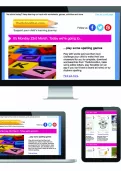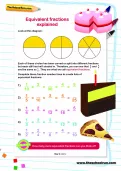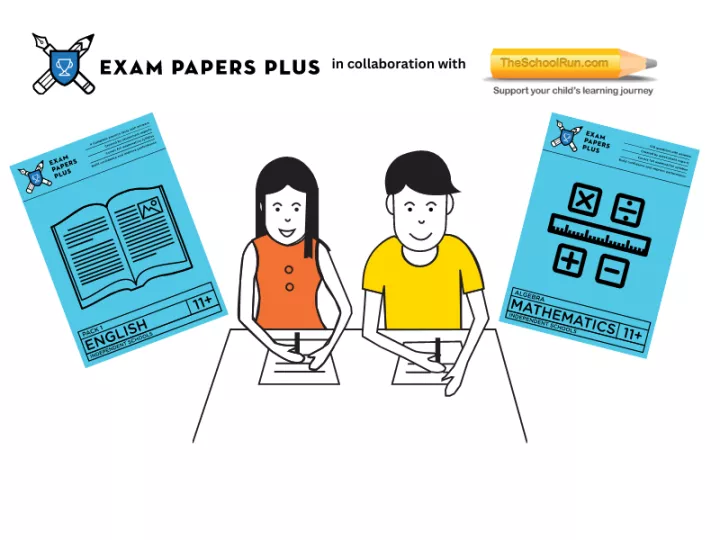Important update from TheSchoolRun
For the past 13 years, TheSchoolRun has been run by a small team of mums working from home, dedicated to providing quality educational resources to primary school parents. Unfortunately, rising supplier costs and falling revenue have made it impossible for us to continue operating, and we’ve had to make the difficult decision to close. The good news: We’ve arranged for another educational provider to take over many of our resources. These will be hosted on a new portal, where the content will be updated and expanded to support your child’s learning.
What this means for subscribers:
- Your subscription is still active, and for now, you can keep using the website as normal — just log in with your usual details to access all our articles and resources*.
- In a few months, all resources will move to the new portal. You’ll continue to have access there until your subscription ends. We’ll send you full details nearer the time.
- As a thank you for your support, we’ll also be sending you 16 primary school eBooks (worth £108.84) to download and keep.
A few changes to be aware of:
- The Learning Journey weekly email has ended, but your child’s plan will still be updated on your dashboard each Monday. Just log in to see the recommended worksheets.
- The 11+ weekly emails have now ended. We sent you all the remaining emails in the series at the end of March — please check your inbox (and spam folder) if you haven’t seen them. You can also follow the full programme here: 11+ Learning Journey.
If you have any questions, please contact us at [email protected]. Thank you for being part of our journey it’s been a privilege to support your family’s learning.
*If you need to reset your password, it will still work as usual. Please check your spam folder if the reset email doesn’t appear in your inbox.
How to make online tutoring work for your child

Hiring a tutor for your child is a big investment, so it’s important to find the right person, and the right format, to help them succeed.
While many families still prefer face-to-face tutoring, a growing number are turning to online tutoring and recognising the many benefits.


Start a unique learning programme!
- Weekly programme for each school year
- Worksheets sent direct to your inbox
- Keeps your child's learning on track
‘Online tuition is still one-to-one tuition; it just takes place on Skype or a similar platform,’ says Jenny Katzaros of Owl Tutors. ‘Sessions are entirely collaborative and interactive.’
Why consider online tutoring?
Although you might assume that online tutoring is ‘inferior’ to tutoring in person, there are actually many benefits to this way of working.
‘One benefit is that you have a huge choice of excellent tutors from across the country, rather than being limited to tutors who live nearby,’ says Nicola Anderson, chief marketing officer of MyTutor.
It also means that you cut out travel costs, so many tutors are willing to offer a lower rate to families who choose online tuition. ‘On average, online sessions will be £10 per hour cheaper than home sessions with the same tutor,’ says Jenny.
The computer-based tutoring model may be more appealing to some children than sitting at a table completing paper work.
‘In many ways, online tutoring is more interactive, and can produce higher quality work,’ Jenny explains. ‘Our tutors use purpose-made programmes, and at the end of each session, all work can be saved in one place so it’s readily available when it comes to revision time.’
‘It also offers continuity: sessions can take place even if a student or tutor has moved house or school,’ Jenny adds.
‘My daughter has tutoring via Skype, and gets on really well with her tutor,’ says Siobhan Crompton, mum to Áine, Year 5. ‘He shares an online whiteboard so it’s really easy for them to work together, and although it’s expensive, it’s been a godsend in preparing for the 11+.’
What to watch out for
As with all things, online tutoring has its pros and cons.
One potential drawback is that it can be difficult to tell whether a particular tutor will have a rapport with your child without meeting them in person, so you should be prepared to put some groundwork into making sure you find the right person.
‘The best way to find a tutor who’s the right match for your child is to book some free meetings,’ advises Nicola. ‘Here, you can meet the tutor, talk about what you’d like to go over in lessons, and see how your child gets on with them before making any bookings.’
Although online tutoring is often cheaper than face-to-face tutoring, it’s not guaranteed.
‘Online tutoring won’t necessarily be the cheapest option, as some of the most experienced and in-demand tutors now only operate online,’ Jenny explains.
While some children thrive on the online format, others prefer to work face-to-face with their tutor.
‘My nine-year-old was seeing a tutor at home, but has now switched to online lessons,’ says mum Michelle Jackson. ‘She preferred lessons in person as they got through more work, and there are small inconveniences, like when her tutor is showing her how to work something out, she has to keep holding her notebook up to the screen.’
Technical glitches can also get in the way at times. ‘A strong internet connection is vital, so it’s important to check your internet speed, and if you’re worried it might be too slow, your internet provider should be able to help,’ Jenny says.
How online tutoring works
In some ways, online tutoring isn’t that different from tutoring in person: your child can cover the same work, get the same level of input, and have their work marked and feedback given by their own tutor.
‘The personalised nature of one-to-one tuition means that tutors progress at the student’s pace and explain things in a way that suits their learning style,’ says Nicola.
Technology is well set up for online tutoring, using programmes such as Zoom and Skype, and features like sharing screens. ‘Tutors and students talk using the live video chat, and the interactive whiteboard means they can share images, pieces of work and practice questions,’ Nicola adds.
Work is set in the same way as with a home tutor, according to your child’s needs and learning goals.
‘Tutors will email or upload work for the student to complete,’ Jenny explains. ‘The student can then either complete the work digitally or print it out, complete it by hand and scan it to return.
‘Tutors will then either mark the work digitally or print, mark and scan it to return to your child.’
Exam Papers Plus & TheSchoolRun.com
If you're looking for practice papers for your child's 11+, our partners at Exam Papers Plus have papers, courses and mock exams for each area.
And their Pretest Plus offers online tests and video courses to help your child succeed at CAT, ISEB PRETEST, CEM SELECT and UKISET examinations.
Choosing the right online tutor for your child
As with hiring a face-to-face tutor, it’s important to make sure the person you choose is a good match for your child.
‘When you’re choosing, look at the tutor’s profile and see if they’re familiar with the exam board and have the right sort of experience that you’re looking for,’ Nicola advises.
‘You can then message the tutor to explain what your child needs, and they’ll let you know if they can help.’
Consider the type of person that would suit your child. For example, would they (and you) prefer an experienced tutor, or a competent A level or university student who could be a role model? Do they work better with male or female teachers?
Keep your child’s age and learning style in mind: ‘For primary-age kids, tutors can plan lessons around fun learning games and exercises to keep them engaged,’ says Nicola.
Jenny suggests setting up a 20-minute phone call with the prospective tutor before you make any decisions.
‘You can learn a lot about someone in a short space of time, and should quickly get a sense of whether they’ll suit your child,’ she says.
‘Use the opportunity to discuss their experience, teaching style and approach to online tuition. Do they seem organised? Do they send resources in good time ahead of each session? Do they understand your child’s goals? These are all important things to think about.’
Keep in mind that you want someone who has experience in online tutoring to help your child get the most from their sessions.
‘Online tuition can seem intimidating, technical and overly complex if you’re new to it, but a good online tutor will be skilled enough to make parents and students totally at ease with the online element,’ says Jenny.
If you’re not confident about choosing the right tutor, you may want to use a tuition service than can help you match your child with the best person.
‘We have a team of Tutor Experts who can match you up with the perfect tutor, whether you need someone to boost your child’s confidence or to support them with a particular need like dyslexia,’ says Nicola.
8 top tips for making the most of online tutoring
1. ‘The most important thing is to find the right tutor, who has a great rapport with your child. If you can do this, everything else should fall into place’ – Jenny.
2. ‘Decide on your child’s learning goals either before the first lesson, or in your first meeting with the tutor. This gives your child something to work towards, and will help the tutor make a plan for each lesson’ – Nicola.
3. ‘Make sure the sessions take place in a quiet space with minimal distractions. Invest in a headset to block out any background noise and focus your child’s attention’ – Jenny.
4. ‘If there are any particular questions or topics your child wants help with, get them ready before hand so you can discuss them with the tutor’ – Nicola.
5. ‘Give your child and their tutor space. We don’t recommend that parents sit in on sessions, as this can both distract and put pressure on the student, and undermine the tutor’s authority. Instead, you can be on hand at the beginning and/or end of each session to touch base with the tutor’ – Jenny.
6. ‘If your child is having any problems with their lessons, have a chat with them to find out what the issue is. You can also message the teacher or have a chat with them at the start or end of the lesson to work out a solution’ – Nicola.
7. ‘Make sure your child is fed and watered before the lesson starts – you don’t want any rumbling bellies! A five-minute break in the middle of the hour can also make it easier for kids to focus on their lesson’ – Nicola.
8. ‘Students and parents are always free to contact tutors in between sessions, and shouldn’t hesitate to get in touch if there’s something they’d like to discuss. This also helps to ensure you don’t encroach on learning time during a session’ – Jenny.
NB: TheSchoolRun receives a small commission from sales made through Exam Paper Plus.








